feature
Decoding the Corn Field
Building third-grade students’ ideas about plant inheritance and variation.
Science and Children—November/December 2020 (Volume 58, Issue 2)
By Dante Cisterna, Erin Ingram, Devarati Bhattacharya, Ranu Roy and Cory Forbes
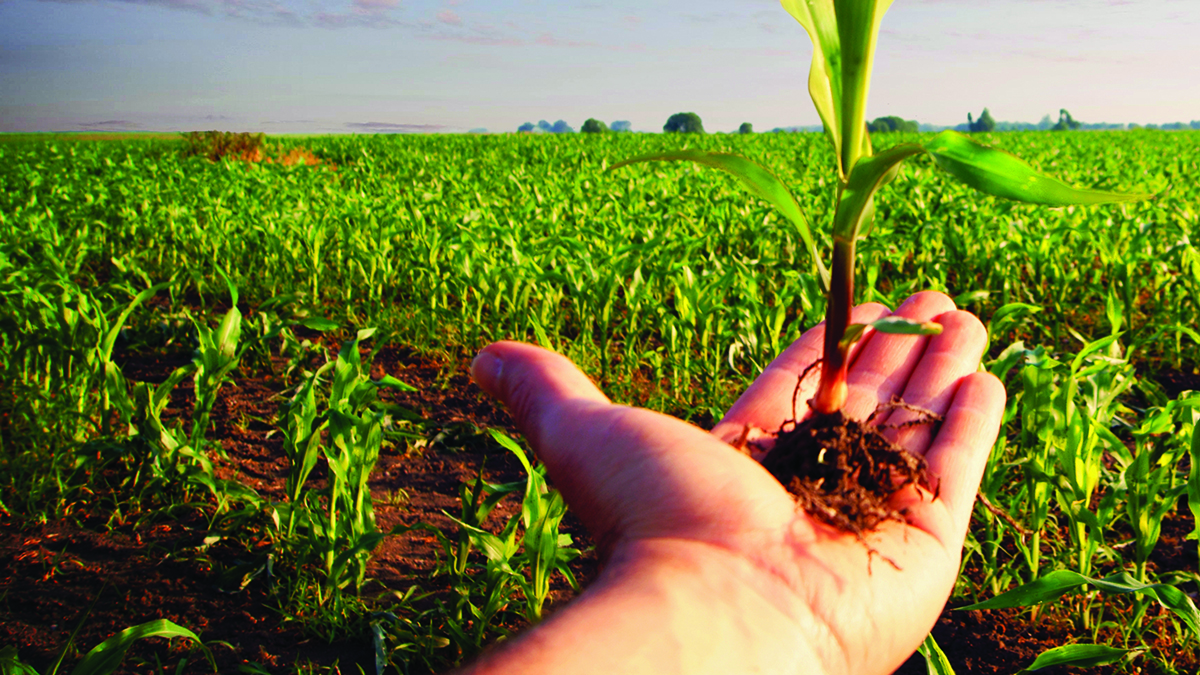
A set of core ideas in the life sciences revolve around genetics, variation, and inheritance. While the Next Generation Science Standards (NGSS; NGSS Lead States 2013) emphasize teaching and learning about these concepts across K–12 grades, it is critical for early learners to begin to develop understanding of them. By the end of fifth grade, students should understand that “many characteristics of organisms are inherited from their parents” and “different organisms vary in how they look and function because they have different inherited information” (NGSS Lead States 2013, p. 29). Elementary students’ first explorations of heredity are often in the context of human traits and family resemblance—for example, by examining eye color and tongue-rolling. Learning about heredity in plants is also important because students may not realize that inheritance occurs in organisms that look and function very differently from humans. In fact, students may not realize that plants are living things that can be related and have parents or siblings (Venville, Gribble, and Donovan 2005).
One such plant species—corn—is readily familiar to many students from everyday experience. Corn is an essential crop for human food systems, whether consumed directly, fed to livestock, or used as a key ingredient in familiar consumer products. However, students may not recognize the role of inheritance and variation in growing diverse types of corn. Furthermore, by learning about inheritance and variation in corn, students can apply these ideas more broadly to their understanding of heredity in plants and other living organisms. This is particularly important since elementary students tend to have fewer learning opportunities about plants than those related to animals (Patrick and Tunnicliffe 2011). An agricultural crop like corn may provide students with a model organism, relevant to their daily lives and useful to aid in learning about life science concepts.
In this article, we present a one-week instructional sequence from a six-week curriculum module (see NSTA Connection) we developed to support third-grade students in developing understanding of inheritance and variation in living things by engaging in scientific modeling. Scientific modeling is a science and engineering practice emphasized in the NGSS in which students develop and use representations of scientific concepts, processes, or phenomena (Forbes et al. 2015; Kenyon, Hug, and Schwarz 2008). In this unit, students develop and use models to investigate the corn life cycle, structure and function, and inherited traits through hands-on investigation, data modeling, and other learning activities that build upon their existing understanding of the key life science concepts, such as life cycles and reproduction. The NGSS-aligned curricular sequence from the unit that we highlight here explores three key ideas: (1) how resemblance between parents and offspring is related to the process of inheritance, (2) how inherited traits are passed from parent to offspring via coded instructions, and (3) how a mix of traits for multiple characteristics creates variation in a population of plants.
The steps for developing these concepts are described below, each of which provides opportunities for differentiated instruction through mixed-ability grouping, curriculum-embedded prompts, use of formative assessment by the teacher, and a balance between individual work and team work. In particular, the lesson affords teachers many opportunities to provide support and guidance to individual student groups that directly addresses their questions and thinking, thus tailoring their teaching approach to match their own students’ learning needs, including those with IEPs. Students may rotate in and out of multiple small groups, allowing students to engage in reciprocal learning, asking and answering questions of their peers. While designed as five, 40-minute instructional periods, individual teachers may elect to use more or less time to engage students in these activities. Given the nature of these activities, no special safety equipment is needed. A list of materials is included in Figure 1.
Materials list.
- Student model template
- Corn variety cards
- Handouts of simple codes matching each of the visible traits
- Media related to corn structure and function (see books list)
- Paper
- Markers and/or colored pencils
- Optional but helpful: Graph paper
Step 1: The Role of Inheritance in Resemblance
The first step of this sequence aims to build students’ ideas about trait inheritance. Prior to this curriculum, third-grade students usually have learned about characteristics and needs of living things and compared life cycles of plants and animals. Thus, to explore students’ initial ideas, the teacher starts by posing the driving question, “Do you think a pumpkin seed could ever grow into a corn plant?” In our experience working with third-graders, the class consensus is typically a resounding “No!” Students often focus their explanations on relationships of kinship and recognize that seeds grow into new plants with similar characteristics. We introduce an activity to engage students in scientific modeling and support their explanations. Students are provided with a model template and asked to explain how parent plants pass traits onto new plants. The student task includes several prompts to support good modeling practice and help students represent their ideas through the creation of a scientific diagram (see Figure 2). To scaffold student learning, the teacher facilitates a whole-group discussion about including arrows or numbers in their models to show a sequence, and labels to indicate key components that illustrate inheritance. Then, students are reminded to include their ideas about plant reproduction that they learned in earlier lessons on life cycles of plants and animals. For example, students may discuss what they have learned about the role of an embryo in carrying trait information from parent to offspring. By calling upon prior experiences, students are able to incorporate ideas about plant structures and functions in the models of inheritance that they develop.
Modeling prompts provided in the student worksheet.
How do parent plants pass inherited traits on to new plants?
Review:
Look back at your drawing of the dissected seed from Lesson 6. Use what you have learned about parts of a seed and inherited traits to complete the following activity.
Directions:
1. Draw a model to answer the guiding question.
2. Remember your ABCs! Make your drawing Accurate, Big, Colorful, and Detailed!
3. Label the important parts of your model.
Your model should:
• Include what a plant MUST HAVE to make another plant with similar traits
• Include what a plant MUST DO to make another plant with similar traits
• Explain HOW the traits are passed from parent to new plant
Step 2: Inherited Traits Come From Coded Instructions
While inherited traits are observable, the mechanisms responsible for passing trait information from parents to offspring are not. The second step of this instructional sequence aims to help students make sense of the abstract relationships between invisible coded instructions and visible traits such as kernel color, plant height, and plant functions like drought or insect resistance (see Figure 3). Students first focus on identifying visible corn traits in four diverse corn varieties pictured on trading cards (Figure 3a). In small groups, students compare and contrast their trading cards with one another to identify unique and shared traits among the corn varieties. After they have become familiar with visible traits, students are provided with a list of simple codes matching each of the visible traits (see Figure 3b). Then, students create a set of coded instructions for a new variety of corn and draw a picture of their new corn seed and plant according to the codes they combined. Figure 4 presents an example of a student’s “new plant” resulting from the combination of parent codes that they selected. Students’ diagrams provide a productive opportunity and evidence for teachers to formatively assess students’ understanding of this connection between observed traits and coded information through individual written feedback to students and group discussions around the following questions: What traits does your new corn plant have? Why does your new plant have these traits? Are there other traits your new corn plant could not have? What is your evidence? How do you know?
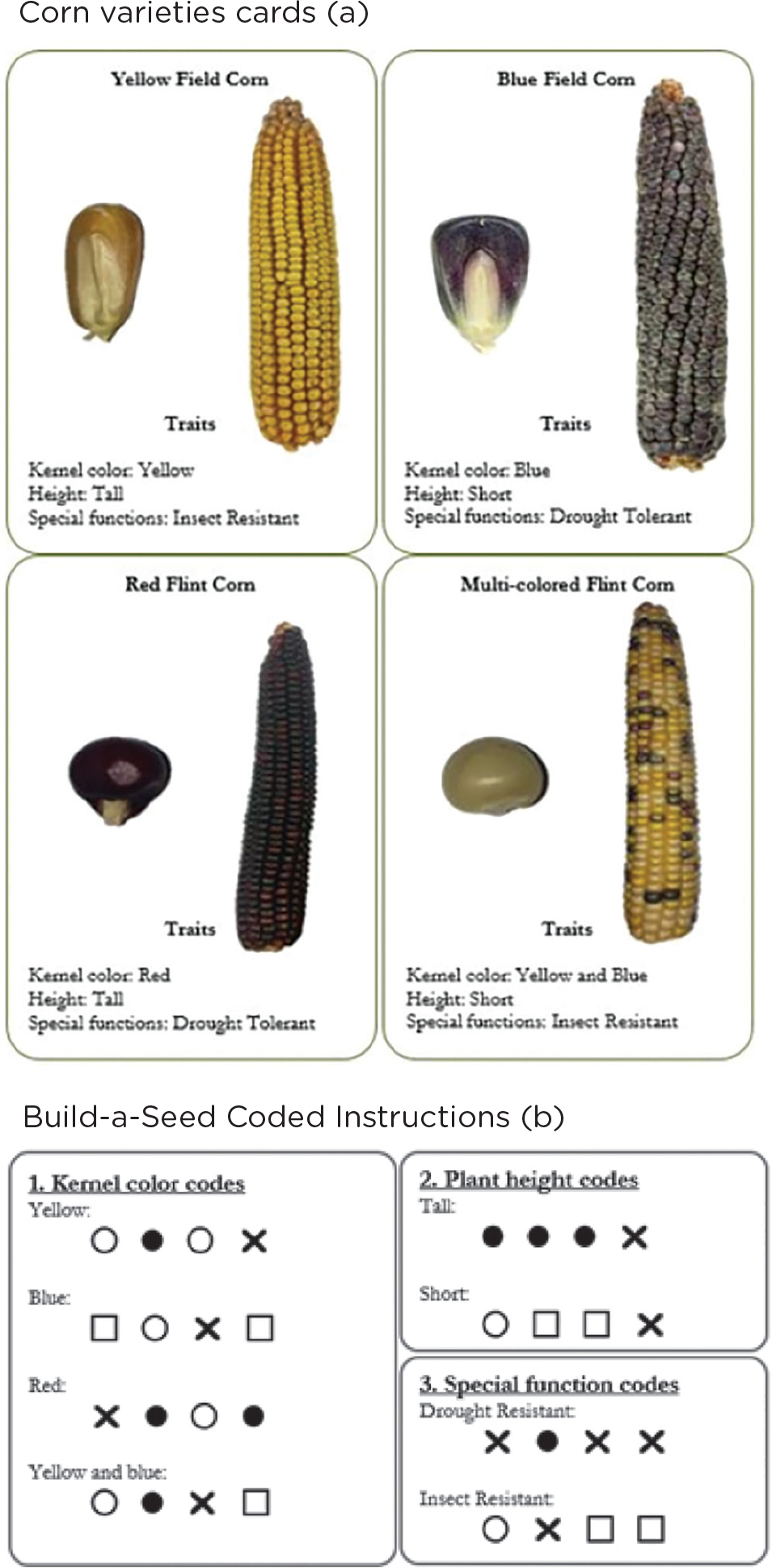
Connecting visible corn traits (a) to invisible coded instructions (b).
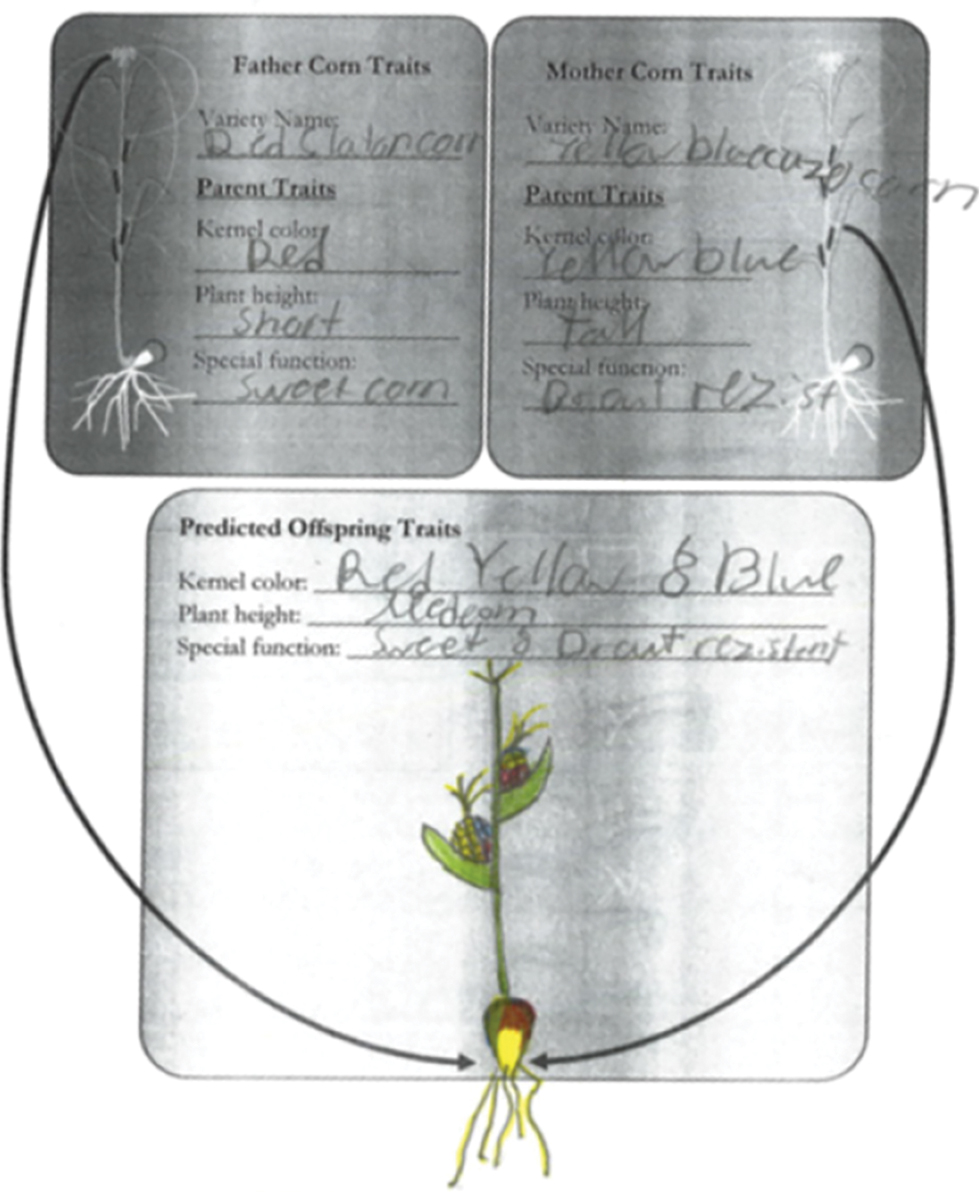
Student worksheet with prediction of combined traits in the offspring plant based on the parent plants’ traits.
Once students understand that the seed is the carrier of coded instructions from the parent plants, they may begin to question how coded instructions get inside the seed. To aid students in understanding this process, teachers guide students through an exploration of media connecting corn plant structures such as the tassel, pollen, corn ear, and corn silks with their functional roles in pollination and inheritance. Students learn that pollination provides not only a means of making new seeds, but also a means of transferring coded instructions from both male and female plant parts to the newly formed seed. Following these learning activities, teachers encourage students to revise their initial models of inheritance to incorporate new ideas about coded information, corn plant structures, and pollination. Activities in Step 2 support connections to Common Core ELA where students use figurative language to represent real-world phenomena, including their temporal dimensions (CCSS.ELA-Literacy.L.3.5), in their models, predictions, and explanations.
Step 3: Identifying Patterns in Trait Variation
To meet the NGSS performance expectation 3-LS3-1, students should analyze and interpret data to provide evidence about inheritance and variation of traits in corn. The third step of this sequence builds upon previous activities to help students visualize trait variation in a population. The corn plant drawings created by students in Step 2 can be assembled on a bulletin board or classroom wall to create a “classroom cornfield” (see Figure 5). Given the significant amount of time and space required to cultivate corn in a classroom setting, creating a “classroom cornfield” is a feasible alternative to collecting data from an actual cornfield. In groups, students record the different traits expressed in the individual corn plants in their classroom cornfield and record their numbers. Based on these observations, students create a frequency distribution of traits in this fictional plant population, first in small, mixed-ability groups that can be assigned to compile data for individual traits. Then, as a whole class, small groups can share their observations to create a public data display for the classroom cornfield. Students’ interpretation of their data is supported by prompts in the curriculum that teachers’ may use to guide discussion: Which traits are most common in the classroom cornfield? Least common? Why are some traits more common and some less common? Use your models to explain your thinking. Do you think these traits could become more or less common in future generations? Why or why not?
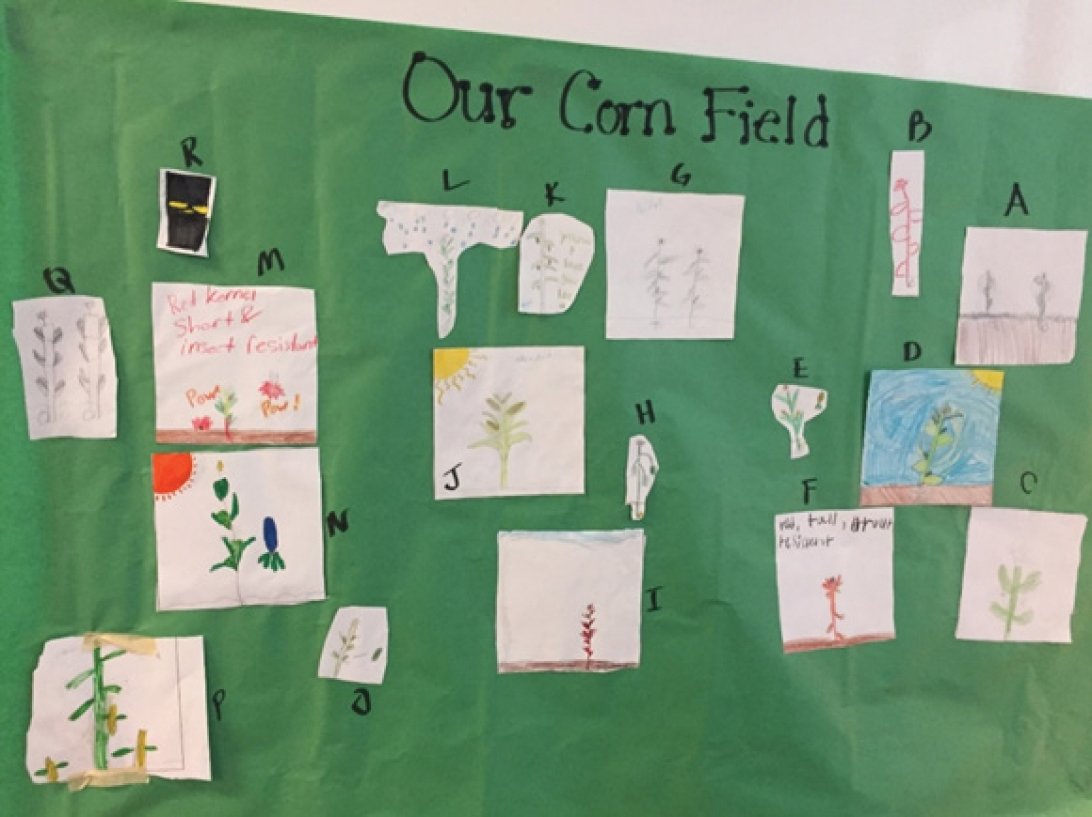
Creating a classroom cornfield.
By graphing the number of individual corn plants exhibiting each of the trait variations (e.g., yellow, blue, red, or mixed kernel color), students can begin to identify patterns of variation visible in the corn plants in a cornfield, including traits that are more common and less common. Activities in Step 3 integrate science mathematics by supporting students’ representation and interpretation of data (CCSS.Math.Content.3.MD.B.3), as well as their engagement with the NGSS crosscutting concept of Patterns, which emphasizes that “observed patterns…guide organization and classification, and they prompt questions about relationships and the factors that influence them” (NGSS Lead States 2013, p. 83), in this case observable traits and inheritance in a population.
Assessment
The learning activities presented here provide many opportunities for both formative and summative assessment. The collaborative and interactive nature of the lesson activities, as well as prompts for teaching questioning described in previous sections, afford teachers opportunities to gauge their students’ thinking frequently throughout this lesson sequence. This allows them to provide more targeted and individualized support for students. For summative assessment, the rubric presented online (see NSTA Connection) can help evaluate students’ reasoning in light of NGSS performance expectation 3-LS3-1. Used together, these assessment methods provide a set of resources with which to comprehensively evaluate students’ learning.
Benefits of Model-Based Teaching and Learning about Inheritance
It is not surprising that many students struggle to make sense of inheritance. Fortunately, engaging students in the practice of scientific modeling (Forbes et al. 2015; Kenyon, Hug, and Schwarz 2008) can better support students in creating their explanations about heredity, represent processes and sequences, and describe ideas about trait inheritance and variation with more sophistication. In our research on third-grade students’ learning about heredity-related concepts (Cisterna et al. 2019; Forbes et al. 2019), we compared student evidence from two versions of the curriculum (model-based v/s non-model-based). We found students experiencing the model-based curriculum displayed more robust ideas about trait inheritance and trait variation than to those who experience the non-model-based curriculum. Students experiencing the model-based curriculum were more prone to connect ideas about corn structures, such as the seed, the tassel, and kernels; and processes such as pollination—to make detailed explanations about trait inheritance and variations. For example, Figure 6 presents the model-based explanation made by Olivia, a third-grade student who explained how pollination and fertilization in corn allowed for the transmission of coded information from the parent corn plants that resulted in specific traits in the new offspring.
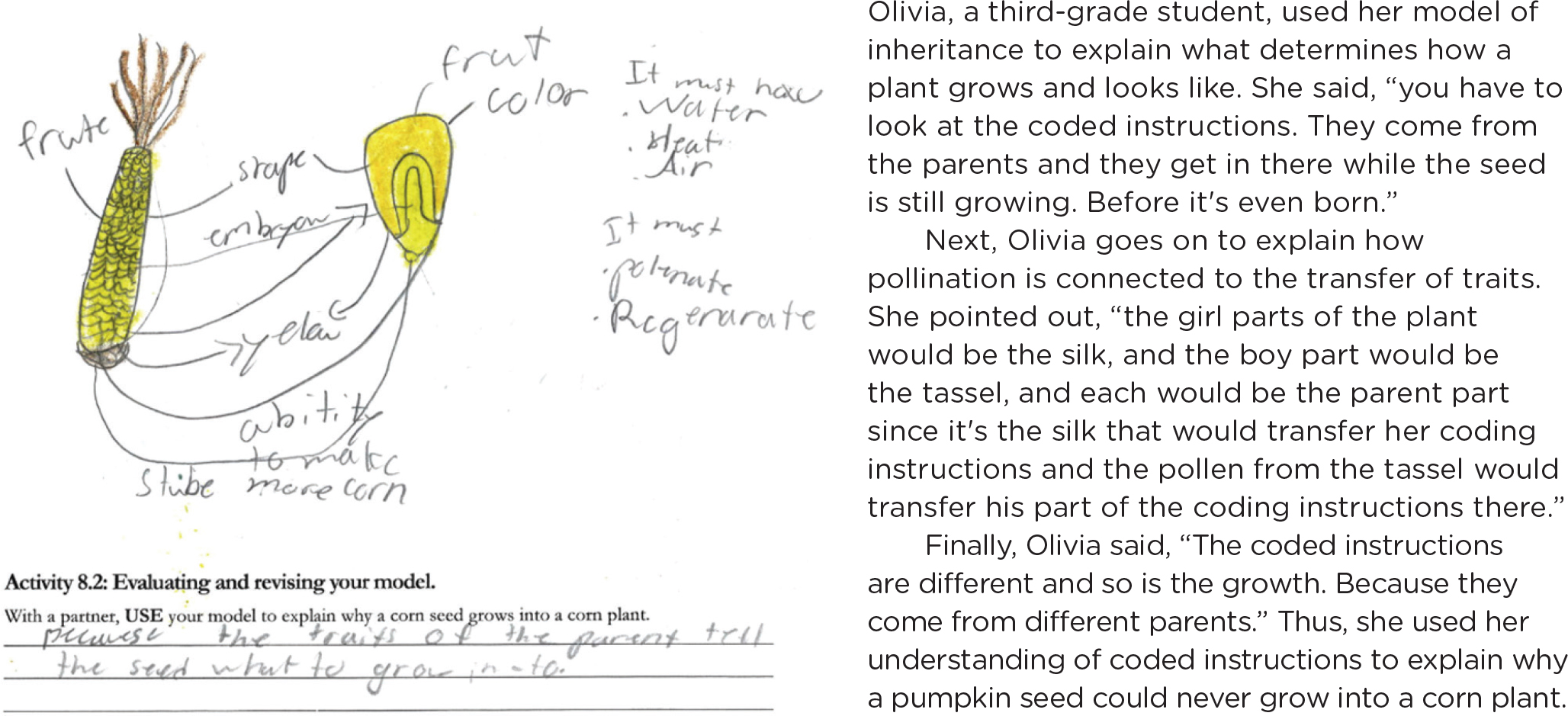
Olivia’s model of inheritance and explanation.
Why is scientific modeling productive for students? First, scientific modeling provides students with a means of explicitly communicating their understanding by using representations. As such, constructing a model of inheritance may provide a means of expressing what is visible to students (traits) and what is not visible to them (the underlying process of traits being passed from parents to offspring through a seed). By using scientific models, students can explore various ways of conveying unseen components of the inheritance process and link these new ideas to visible processes. Second, based on the NGSS assessment boundary for 3-LS3-1, elementary students are not expected to explain the genetic mechanisms involved in inheritance or variation (NGSS Lead States 2013, p. 29); however, providing students with simplified terms such as “coded instructions” and using symbols as codes may help students in developing a foundation for future learning about the mechanisms underlying heredity. Lastly, scientific modeling can support scientific reasoning about inheritance. By engaging in the iterative process of constructing, sharing, using, and revising models, students can develop and refine their evidence-based explanations for why offspring resemble their parents and patterns of traits in a population.
Final Thoughts
In this article, we present a specific instructional sequence of our model-based curriculum that supports elementary students’ learning about inheritance. This sequence supported students in connecting ideas about inheritance of traits, from a corn plant to a corn population in a “classroom cornfield,” exploring links between organisms, variation, and population. The use of models can support students’ engagement with processes that, otherwise, look disconnected from one another. The systematic incorporation of modeling practices in a curriculum may help elementary students develop a more concrete understanding of scientific terminology and explanations. In particular, the use of corn in a model-based curriculum has the potential to help students develop a deeper understanding of plants and heredity that can serve as a foundation for more complex ideas about heredity and variation of traits in middle and high school, as emphasized in Next Generation Science Standards.
Cory Forbes (cory.forbes@unl.edu) is an associate professor and director at the University of Nebraska-Lincoln (UNL) in Lincoln, Nebraska. Dante Cisterna is an associate research developer at ETS in Princeton, New Jersey. Erin Ingram is a curriculum development specialist, and Ranu Roy and Devarati Bhattacharya are postdoctoral researchers, all at UNL.
Biology Earth & Space Science Instructional Materials Interdisciplinary Teaching Strategies Elementary Grade 3


